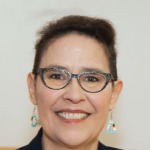Why did you want to become a judge?
The short answer is that it’s a continuation of my career path as a public servant. The

longer answer is that I had not thought of it until I was encouraged to apply about six years ago by someone who had served on the Judicial Selection Commission. When I asked why they thought I would make a good judge, the person told me that I had the right kind of background.
This was a bit surprising to me at the time. Although I have always kept my license current and have been a tribal judge, I have not practiced law nonstop since passing the bar, and I have done a lot of other things. I was fortunate to have found other ways to be of service that appealed to me, such as providing technical assistance to grantees funded by the Department of Justice, the Substance Abuse Mental Health Services Administration, and the Children’s Bureau. Service areas included substance misuse prevention, suicide prevention, education safety, and reducing childhood exposure to violence.
What was your career path before becoming a judge?
I have done a lot of work in child welfare and social services. Starting out, I worked at nonprofits in Minneapolis. I think of that as the school of hard knocks, because I learned a lot from the families we served. I was a legal analyst in the Licensing Division at DHS. After that, I was the Indian Child Welfare Program Consultant for the Minnesota Department of Human Services. In that role, I provided training and guidance on best practices in Indian child welfare to county social service workers, directors, judges, and guardians ad litem. I had the privilege of working on the Tribal/State Agreement on Indian Child Welfare between the state and the 11 federally recognized tribes in Minnesota. I have served on many different nonprofit boards to try to have an impact in making life better for people who have been marginalized, including those in my community.
What has it been like being onboarded as a judge during the COVID-19 pandemic?
I worked from home before joining the Fourth District, so there is a little bit of familiarity that way. But because of the steep learning curve, it is very challenging, doing everything on Zoom. We have great judicial staff, so that really helps. But, I am looking forward to a non-Zoom judge experience.
What do you think is the most pressing issue facing our judicial system today?
Aside from the challenges that typically face big systems, such as budget, efficiency, and quality service, I think of the things that hit the heart: building trust in our system from the communities we serve. Conveying through the way we do our work that we truly see the people who come before us. Having worked in big systems, I know the importance of data. I also know that data, by its nature, can depersonalize the challenges that people face. Part of the work of any attorney representing individuals is to humanize them. Part of the job as judicial officers is to see them.
What’s been the most surprising thing for you since taking the bench?
Being called “your honor” takes some getting used to. Also, judges do an incredible amount of multi-tasking.
What’s your favorite thing to do outside of work?
Hang out with my husband at our favorite coffee shop (when COVID allows of course), cook for family and friends, walk by the river, and play doubles tennis with my tennis buddies. I am a tennis fiend.
What are some books you recommend?
Nonfiction: a tossup between
The Warmth of Other Suns by Isabel Wilkerson and
The Black Dog of Fate by Peter Balakian. Fiction: a tossup between
Everything is Illuminated by Jonathan Safran Foer, and A Constellation of Vital Phenomena by Anthony Marra.